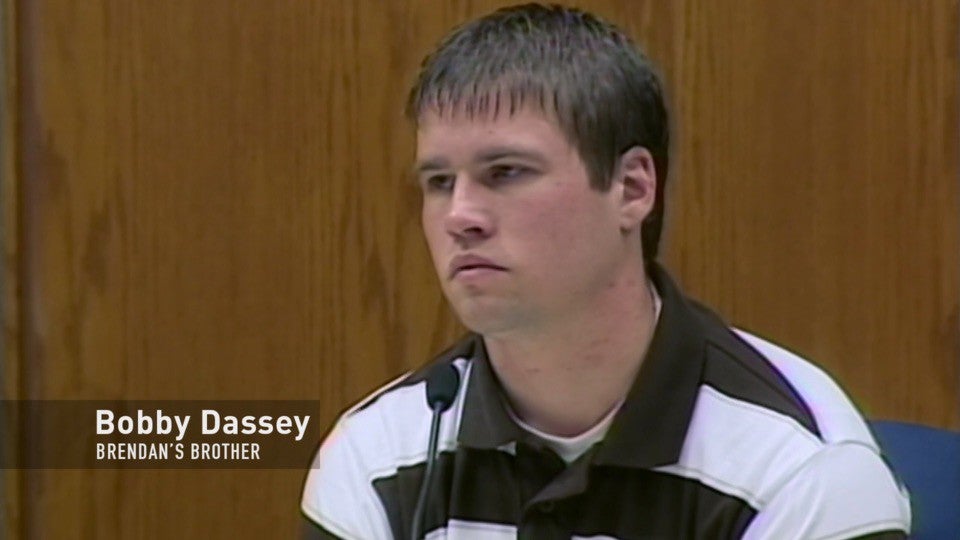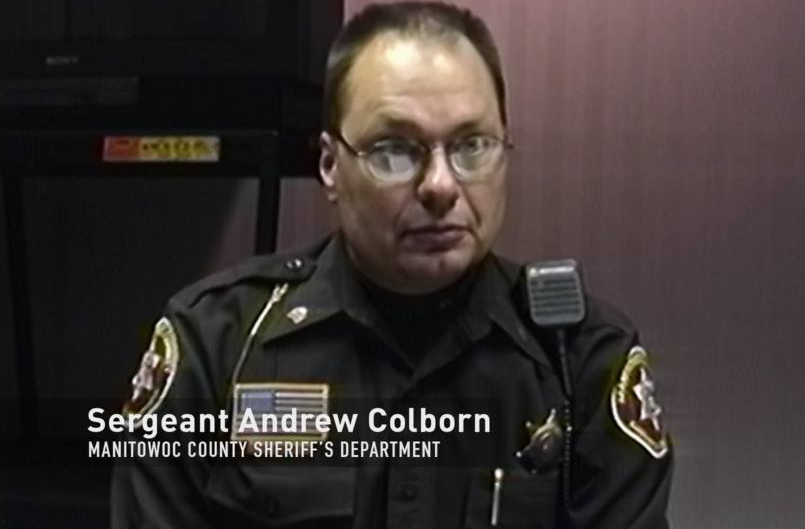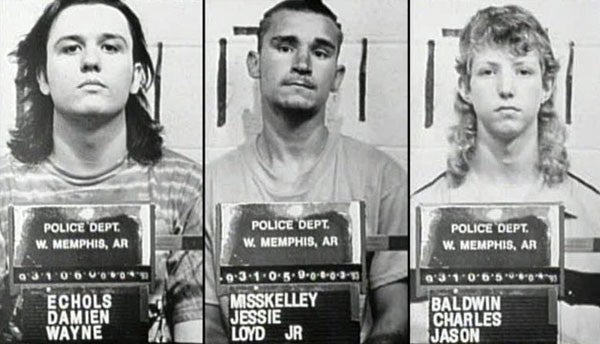If you watched Netflix’s latest hit Making a Murderer, it’s likely the 10-part miniseries exposing the failures of our judicial system has taken a brutal toll on your spirit. It’s a whodunnit without catharsis, a timely frankensplicing of elements from Serial, The Jinx, The Staircase — and even the O.J. Simpson trial.
Viewers who believe Steven Avery and Brendan Dassey killed Teresa Halbach — and, more importantly, that the case against them was proven beyond a reasonable doubt—can sleep sound at night, knowing that justice has been served. But, for the rest of us, we’re now brimming with self-righteous indignation. We’re also admittedly still hooked on the show — craving updates and closure.
First, get your conspiracy theories sorted:
For some viewers who can’t handle the outcome of the series, this means turning to Reddit with an endless outpouring of conspiracy theories. Others have signed and shared online petitions demanding federal pardons for Avery and Dassey’s crimes against the state of Wisconsin (which is completely idiotic, as we’ll explain below).
Don’t join their ranks. There are ways to channel our powerlessness to push for systemic changes in the justice system beyond online ranting. But first, you need to get your facts straight. To clarify things (while still savoring the fun ridiculousness of conspiracy theories), here are the most popular countervailing theories on what really happened to Halbach, ranked from most preposterous to least.
The True Detective Season 1 theory: Satanists, blood sex cult, female sacrifice, crooked cops, nihilism etc.
“The filmmakers did it” theory: Because what’s more dastardly than framing two innocent people for murder when you could have killed an innocent woman, framed two innocent men, then spent 10 years making a documentary that presents the idea that the men were framed?
The weed theory: Teresa Halbach stumbled upon a clandestine marijuana grow site run by the city. Once the cops caught her, they had to dispose of her. She knew too much. The proposer writes: “If dishonest cops want someone out of the way, and they’re trying to cover something up, and they may be willing to kill someone for it, then it’s very likely that drugs and money are involved.” Fair.
The German theory: This theory appeared on a message board in 2006 and has since been removed from the web. Recreated from memory on a Reddit thread, it had something to do with dog breeding, a grudge that a woman had with her lover, whom she tried to set up for murder after Halbach’s disappearance. Clearly, a theory reconstructed “from memory” doesn’t hold much water, but its disappearance is awfully mysterious… Don’t hold your breath on this one.
The Avery-Land-slash-Doug-Hagg theory: Another Redditor claims about 40 acres of land owned by the Avery family is important to the city. For what reasons, they are unsure, but one user points out that “this piece of property is among the only in Wisconsin that don’t follow the grid and river” and that the District Attourney’s mentor, Doug Hagg, is the head of real estate transfers and registry in the Manitowoc area.

The Dassey-Tadych theory: Brendan’s brother Bobby Dassey and stepfather Scott Tadych used one another as an alibi. There were suspicious scratches on one of their backs after Teresa’s disappearance, which Bobby claims a puppy did. They were on the property the day of. Their stories don’t fully line up, and Tadych also has a violent past.
The ex-boyfriend/brother theory: There’s something fishy about the behavior and the interviews given by Teresa’s ex-boyfriend Ryan Hillegas and brother Mike Halbach. The missing voicemail, the fact that they were somehow automatically cleared from suspicion, the intangibles in their demeanors: If they weren’t involved, many of the things they did are truly puzzling.

The Colburn theory: Colburn was the cop who called in the license plate to police dispatch several days prior to Halbach’s disappearance. The idea is that the cops were fully planning this out in advance. If the cops weren’t up to something, then this is absolutely mystifying. Or perhaps the cops found an already dead, or dying, Halbach and then realized that this would be an opportunity to screw Avery (who was currently suing the city for $36 million).
The “Charles and Earl Avery did it” theory: One of most plausible theories is that someone else in the extended Dassey-Avery family was behind the murder. Steven came out and accused his brothers Charles and Earl of the crime in 2009. Their history of violence and motive to cut Steven out of the family business posit them as suspects with motive, means and opportunity.
“The Docuseries is Biased” theory: Since the release of Making a Murderer, there have been several articles and threads that outline “damning” evidence the documentary omitted, including:
- Steven Avery called Halbach using a *67 caller-ID block on the day of Teresa’s disappearance.
- The bullet with Halbach’s DNA is from Avery’s gun (which has now turned out not to be true).
- Halbach complained to co-workers that Avery had creeped her out before — when he answered the door in a towel.
- Avery’s DNA is on the hood latch to Halbach’s car (but, oddly, not his fingerprints).
- Brendan Dassey’s four-hour interrogation (which is now available in full, on YouTube) is supposed to somehow deflate the idea that Dassey was coerced into a false confession.
But does any of this evidence prove that Steven Avery or Brendan Dassey committed murder beyond a reasonable doubt? If so, how? Is any documentary (or any internet article, any cultural object that’s narrative in nature, for that matter) capable of or expected to be wholly objective? The reason the docuseries features interviews with the accused and their defense team is that the prosecutors and police denied requests for being interviewed. It’s impossible to tell a fully rounded nonfiction story when not everyone wants to talk to the filmmakers.
Complete objectivity is a myth. The facts are the facts. Interpretation of events — you know, what juries do, too — is inherently subjective. For all the “is Making a Murderer ethical?” thinkpieces (by film and pop culture critics, not philosophy or legal experts, no less) out there, the answer is “yes.” It can be assured the filmmakers made every reasonable effort to include all sides in their story.
What’s happening with the major players of Making a Murderer today?
I'm going to get a locker in 2016 just to put this up: #MakingAMurderer pic.twitter.com/PES6xqQbAO
— Kristen Bell (@IMKristenBell) January 3, 2016
Strang Love
Perhaps the only heroes or winners of this sad tale are Avery’s attorneys Dean Strang and (to a lesser extent) Jerome Buting. These compassionate defense attorneys are now a meme. Strangcore is a thing. Sticking up for individual rights is suddenly sexy. Strang and Buting’s phones are ringing off the hook, and Strang has been very vocal about the fact that the documentary covered all of the relevant information from the trials. Strang may be involved if Avery’s case goes to appeal.

Ken Kratz
Former Calumet County District Attorney Ken Kratz is going out swinging, trying to save face in the deluge of contempt he’s now (rightfully) facing. As you know, the only remotely redeeming things to happen over the course of Making a Murderer’s last few episodes is that Kratz gets exposed for being a drug-addled, lecherous, immoral trash-man after his grotesque texts to victims of domestic violence surfaced in 2010. He has allegedly lost his house, wife and D.A. gig because of this scandal and is courting any publication that will publish interviews with him.
In these interviews, Kratz claims the filmmakers omitted key elements from the trial, though he denied requests by the directors to appear in the film (and, presumably, make a case against Avery and Dassey). It’s an easy, convenient rhetorical position to blame someone else for omitting information that you could have presented to them in the first place. How this person — who blames his crimes on pill addiction (Was he high during the Avery and Dassey trials as well?) — is still allowed to practice law remains a mystery.
The Halbach Family
The Halbach family has been mostly avoiding any public spotlight. However, they just dropped their civil lawsuit against Avery and Dassey (which was originally filed in 2006).
Len Kachinsky
Blundering public defender (or Michael Scott impersonator?) Len Kachinsky essentially drove the nail in his client Brendan Dassey’s coffin. Since the show’s airing, Kachinsky admitted that he could have done better for his client, who is now serving a life sentence, though he took no responsibility and is still practicing law.
But what about the case? Who can help?
The Appeals
Attorney Kathleen Zellner announced she, along with assistance from the legal director of the Midwest Innocence Project, will be representing Steven Avery moving forward.
Laura Nirider and Steven Drizin of Bluhm Legal Clinic at the Northwestern University School of Law are currently representing Brendan Dassey. They are awaiting the opinion of a Wisconsin judge as to whether this case will be heard in appellate court, a decision which will come at some point this year.
The Petitions
There are dozens of petitions out there, calling for a wide array of government actions. But are any worthwhile? It doesn’t appear so. The White House has responded to petitions by claiming it’s essentially powerless in the Avery and Dassey cases, as they were convicted by the State of Wisconsin (and not a federal court). Wisconsin Gov. Scott Walker — the one person who could lawfully spring the convicted men — said he will not pardon them.
The Jurors
One thing Making a Murderer implies (but does not explicitly explain) is the near complete lack of guidelines for jury deliberations, but some of what went on in the jury box is starting to leak out. One of the jurors in the Avery trial has come forward and accused other jurors of bullying and ‘trading votes’ on different charges, though this hasn’t been substantiated yet. Another Avery juror has come forward to claim she believes the correct verdict was reached.
The Evidence
What might ultimately be more damning is this roundup from UPROXX of all the new evidence that has come to light since the show’s release that exculpates Steven and Brendan — including:
- “The leg irons and handcuffs found in Avery’s home had the DNA of Steven Avery and at least one other unidentified person. Teresa Halbach’s DNA was not found on them.”
- “A forensic anthropologist testified for the defense that an open fire couldn’t have generated enough heat to burn a body and destroy bones the way Halbach’s remains were found.”
Other things you can do if judicial misconduct makes you feel powerless:
- Check out this handy “Suggested Action Agenda,” which gives specific instructions on how to support reform which the show has brought to light and offers links to meaningful entities to donate to. Suggestions include advocating for states to mandate electronically recording all police interrogations and limiting the duration of the interrogation of juveniles.
- Dig into some of the actual raw evidentiary files and court documents. Perhaps your conspiracy theory will be more fact-based than some of the ones we mentioned.
- Or maybe apply to become of Manitowoc’s finest yourself. We hear they’re hiring. And for God’s sake, vote.
If you’re beyond hooked on crime docs, what should you watch next?
The Staircase
This story of Michael Peterson’s trial for the 2001 murder of his wife Kathleen includes bisexual secrets, two bizarre deaths involving staircases, a missing blow poke, David Rudolf (proto-Dean Strang), plenty of Barney Fifes, and a nightmarish perspective on North Carolina-living.
The Thin Blue Line
Errol Morris’s groundbreaking 1988 documentary about the wrongful conviction of Randall Dale Adams for killing a cop led to a huge development in the case.

Paradise Lost (Parts 1, 2 and 3)
This is the tale of the ill-fated West Memphis Three — teenagers wrongfully convicted of murder in the early ’90s. Damien Echols, one of the Three, recently made a statement after watching Making a Murderer, saying: “Why is it that those who are in the positions to protect us consistently get away with atrocious acts of corruption and violence, without consequences, without accountability? They are protected by the very ones who should be policing them.”
Front Page: The Steven Avery Story
A program on true crime network Investigation Discovery will address the Avery case and aims to set angry viewers straight. (We’ll have to wait to see which conspiracy theories emerge from that show.)
Jonny Coleman is a writer, music supervisor, and self-facilitating media node.He last wrote about the unironic ’90s novelty T-shirt industry.
